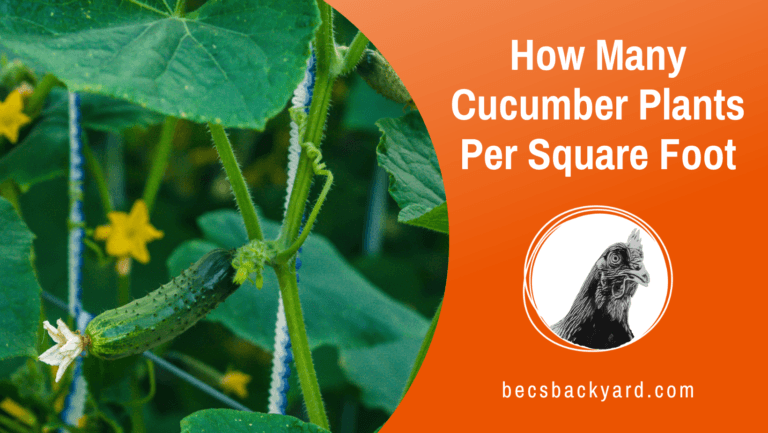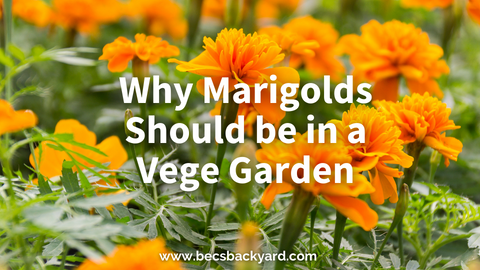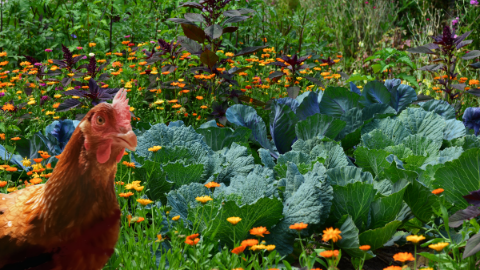A Beginner’s Guide To Watering Your Vegetable Garden
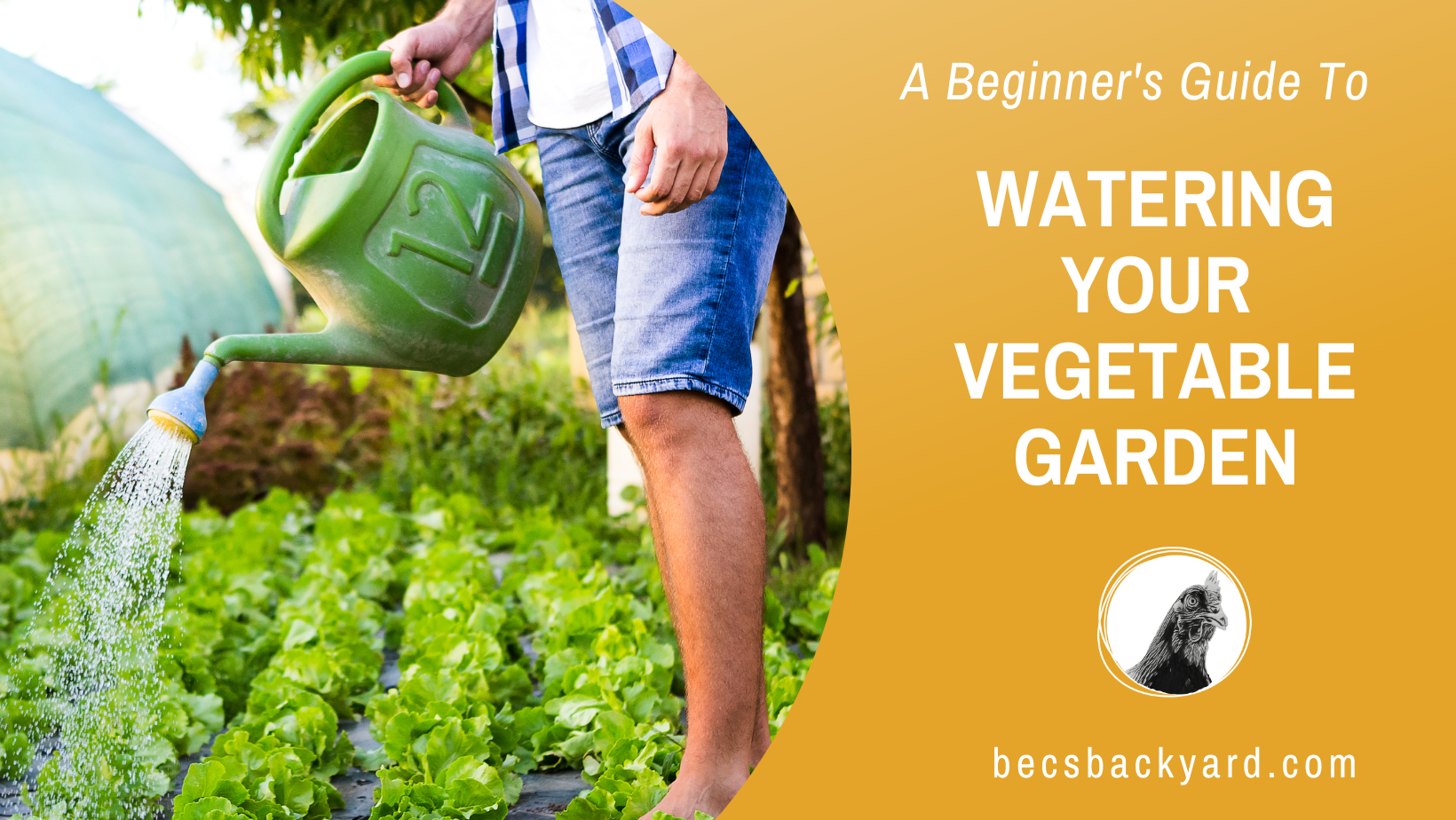
Watering your vegetable garden can be both a simple and complex task. There are many factors to consider, such as the type of soil, the vegetables you are growing, and the weather conditions. However, with a little bit of knowledge and the right tools, you can easily water your vegetable garden and enjoy a bountiful harvest.
First, it’s important to understand the basics of watering your vegetable garden. Most vegetables require about one inch of water per week, but this can vary depending on the type of soil and the weather conditions. It’s important to water deeply and infrequently, rather than giving your plants a light sprinkle every day. This encourages the roots to grow deeper into the soil, making the plants more resilient to drought conditions.
Choosing the right equipment is also crucial to watering your vegetable garden. Soaker hoses are a great option for those who want to make watering their garden simple and efficient. They can be easily woven through the garden beds and turned on low when it’s time to water. A garden sprinkler are also very popular option for watering your garden. Additionally, understanding the role of organic matter and managing weeds can help to conserve moisture in the soil and reduce the frequency of watering.
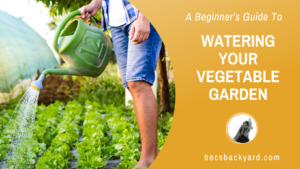
Guide To Watering Your Vegetable Garden : Key Takeaways
- Understand the basics of watering your vegetable garden, including the amount of water required, how often to water, and the importance of deep watering.
- Choose the right equipment, such as soaker hoses, to make watering your garden simple and efficient.
- Implement techniques such as managing weeds and utilizing organic matter to conserve moisture in the soil and reduce the frequency of watering.
Understanding the Basics
As a beginner, understanding the basics of watering your vegetable garden is essential to ensure a healthy and productive harvest. There are a few key factors to consider when it comes to watering your vegetable garden, including soil, water, light, temperature, wind, shade, sunlight, and space.
Firstly, it’s important to understand your soil type. Soil is made up of different sized particles of minerals, organic matter, air, and water. You may have heard other gardeners talking about what type of soil they have in their gardens. For example, I have clay soil in my yard. Clay soil tends to be heavy and holds onto water for longer periods, so it requires less frequent watering. On the other hand, sandy soil drains quickly and may require more frequent watering.
Secondly, water is a crucial component of a healthy vegetable garden. Most vegetables need 1-2 inches of water per week on average. However, this does not mean watering one time per week. It’s best to water deeply about three times a week, factoring in the rain. To help you keep track of how much water your garden is getting, you can use a rain gauge.
Thirdly, light, temperature, and wind can all affect how much water your vegetable garden needs. Plants need sunlight to photosynthesize and grow, but too much direct sunlight can cause them to dry out quickly. Similarly, high temperatures and strong winds can cause plants to lose moisture rapidly, so they may need more frequent watering.
Lastly, it’s important to consider the space you have available for your vegetable garden. If you have a small space, you may need to water more frequently because the soil will dry out faster. However, if you have a larger space, you may be able to water less frequently because the soil will hold onto moisture for longer periods.
By understanding these basics, you can ensure that your vegetable garden is getting the right amount of water to thrive.
Choosing the Right Equipment
When it comes to watering your vegetable garden, choosing the right equipment is crucial. The type of equipment you use will depend on the size of your garden, the type of plants you have, and your personal preferences. Here are some options to consider:
Hose
A garden hose is a versatile tool that can be used to water your vegetable garden. It’s easy to use, and you can control the water flow with the nozzle. However, it can be time-consuming to water a large garden with a hose, and it’s not the most efficient option.
Watering Can
A watering can is a great option for small gardens or for watering individual plants. It’s easy to use and gives you more control over the water flow than a hose. However, it can be tiring to carry a heavy watering can around, and it’s not the best option for large gardens.
Sprinkler
A sprinkler is a good option for larger gardens or for watering your plants while you’re away. It’s easy to set up and can water a large area at once. However, it’s not the most efficient option, as some of the water will evaporate before it reaches your plants.
Drip Irrigation
Drip irrigation is a more efficient option than a sprinkler or hose. It delivers water directly to the roots of your plants, reducing water waste and the risk of overwatering. It’s also easy to set up and can be automated with a timer.
Rain Gauge
A rain gauge is a useful tool for monitoring how much water your plants are getting. It measures the amount of rainfall in your garden, so you can adjust your watering schedule accordingly.
Watering Wand
A watering wand is a great option for watering plants that are hard to reach, such as hanging baskets or tall plants. It gives you more control over the water flow than a hose and is easy to use.
Soaker Hoses
Soaker hoses are a great option for watering your vegetable garden. They deliver water directly to the roots of your plants, reducing water waste and the risk of overwatering. They’re also easy to set up and can be left in place for the entire growing season.
Overall, choosing the right equipment for watering your vegetable garden is important. Consider the size of your garden, the type of plants you have, and your personal preferences when making your decision.
Selecting Your Vegetables
As a beginner, selecting the right vegetables for your garden is crucial. You want to choose vegetables that are easy to grow and maintain, especially when it comes to watering them. Here are some vegetables that are great for beginners:
Tomatoes: Tomatoes are a popular vegetable to grow and can be grown in pots or in the ground. They require consistent watering, especially during the fruiting stage, to prevent cracking and splitting.

Squash: Squash plants are low maintenance and require regular watering to keep the soil moist. They are also great for small spaces as they can be grown vertically.

Lettuce: Lettuce is a cool-season crop that requires consistent watering to prevent bitterness and bolting. It can be grown in pots or in the ground and is a great addition to any salad.
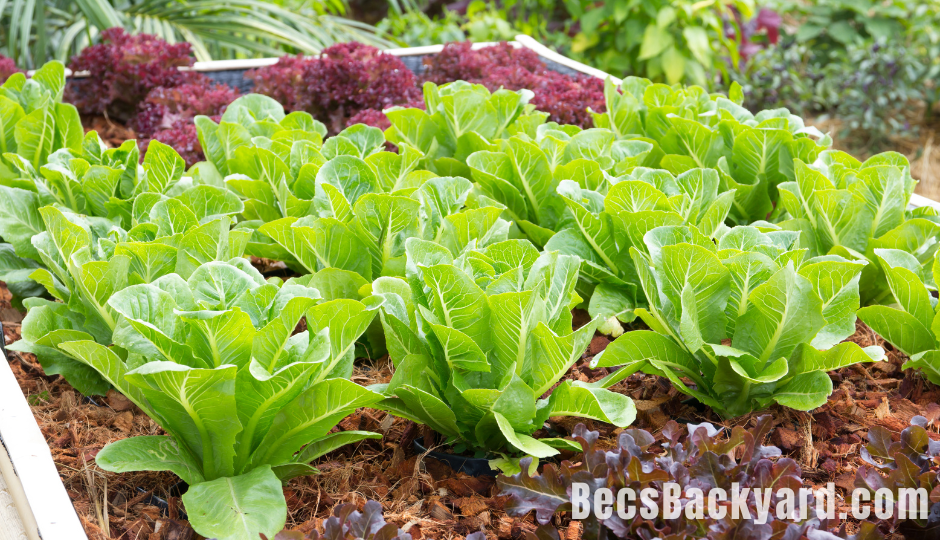
Radishes: Radishes are fast-growing and require consistent moisture to prevent splitting. They can be grown in pots or in the ground and are a great addition to any salad or sandwich.

Carrots: Carrots require regular watering to keep the soil moist and prevent splitting. They can be grown in pots or in the ground and are a great addition to any meal.

Spinach: Spinach is a cool-season crop that requires consistent watering to prevent bitterness and bolting. It can be grown in pots or in the ground and is a great addition to any salad or smoothie.
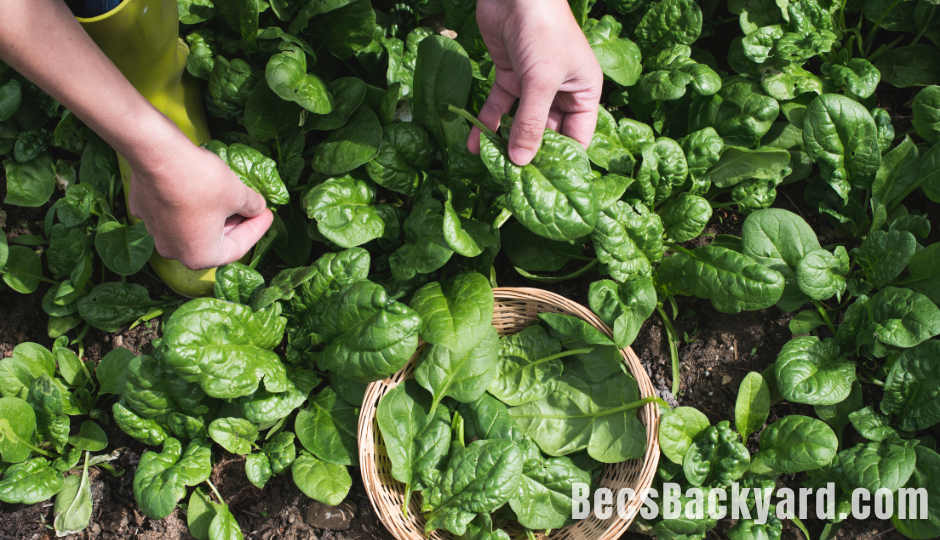
Peas: Peas require regular watering to keep the soil moist and prevent the pods from drying out. They can be grown in pots or in the ground and are a great addition to any meal.

Beans: Beans require consistent watering to keep the soil moist and prevent the pods from drying out. They can be grown in pots or in the ground and are a great addition to any meal.

Herbs: Herbs like basil, parsley, and cilantro require consistent watering to keep the soil moist. They can be grown in pots or in the ground and are a great addition to any meal.

Peppers: Peppers require consistent watering to keep the soil moist and prevent blossom end rot. They can be grown in pots or in the ground and are a great addition to any meal.

Leafy Greens: Leafy greens like kale, chard, and collard greens require consistent watering to prevent bitterness and bolting. They can be grown in pots or in the ground and are a great addition to any salad or meal.

Onions: Onions require consistent watering to keep the soil moist and prevent splitting. They can be grown in pots or in the ground and are a great addition to any meal.

Beets: Beets require consistent watering to keep the soil moist and prevent splitting. They can be grown in pots or in the ground and are a great addition to any meal.

Remember to choose vegetables that are easy to grow and maintain, especially when it comes to watering them. With the right selection, you can have a bountiful harvest in no time.
Preparing the Garden Bed
Before watering your vegetable garden, it’s important to prepare the garden bed properly. This will ensure that your plants have the best possible start and are able to grow and thrive.
One option is to use raised garden beds. These are small, contained areas that are elevated off the ground and filled with a mixture of sand, compost, and topsoil. Raised beds have many benefits, including better drainage and easier access for planting, weeding, and harvesting.
If you don’t have the space or resources for raised beds, you can still prepare your garden beds for planting. Start by removing any weeds or invasive roots from the area. Be sure to pull out any visible weeds and grass, as well as any fast-growing roots that may be hidden at first sight.
Next, consider adding a layer of sand to the soil. Sand can help improve drainage and prevent soil compaction, which can be especially important in areas with heavy clay soils. You can also mix in compost or topsoil to add nutrients and improve soil structure.
Finally, consider the layout of your garden beds. Be sure to leave enough space between plants to allow for growth and airflow. You may also want to create paths between beds to make it easier to access and tend to your plants.
By taking the time to properly prepare your garden bed, you can help ensure that your vegetable garden gets off to a great start and produces a bountiful harvest.
Watering Techniques and Tips
Watering your vegetable garden is a crucial aspect of maintaining a healthy and thriving garden. In this section, I will discuss some watering techniques and tips that will help you keep your garden in top shape.
How Much Water to Use
One of the most common questions asked by beginner gardeners is how much water to use. As a general rule, your vegetable garden needs at least one inch of water per week. However, this can vary depending on the weather conditions and the type of soil you have. Sandy soil drains water quickly, so you may need to water your garden twice a week. On the other hand, clay soil retains water, so watering once a week is usually sufficient.
When to Water
Knowing when to water your vegetable garden is essential. The best time to water is early in the morning or late in the evening when the sun is not too hot. Watering during the day can cause the water to evaporate quickly, and watering at night can lead to fungal diseases.
How Often to Water
The frequency of watering your vegetable garden depends on several factors, including the weather conditions, the type of soil you have, and the stage of growth of your plants. As a general rule, you should water your garden deeply once a week. However, during hot and dry weather, you may need to water more frequently.
Hand Watering vs. Overhead Sprinklers
Hand watering is an effective way to water your vegetable garden, especially if you have a small garden. It allows you to control the amount of water your plants receive and avoid overwatering. Overhead sprinklers, on the other hand, are a convenient way to water your garden, especially if you have a large garden. However, they can lead to overwatering, which can cause fungal diseases and other problems.
Overwatering
Overwatering can be just as harmful to your vegetable garden as underwatering. It can lead to root rot, fungal diseases, and other problems. To avoid overwatering, make sure to water your garden deeply once a week and avoid watering during the day when the sun is hot.
In summary, watering your vegetable garden properly is essential if you want to maintain healthy and abundant plants. By following these watering techniques and tips, you can ensure that your garden thrives and produces a bountiful harvest.
Understanding Soil Types
As a beginner, it’s essential to understand the different types of soil in your vegetable garden. The type of soil you have will determine how often you need to water your plants and what type of plants will grow well in your garden.
There are different types of soil, including sandy soil, clay soil, and loamy soil. Sandy soil is easy to work with, but it doesn’t retain water well. On the other hand, clay soil retains water well, but it can be difficult to work with. Loamy soil is a combination of sand, silt, and clay and is considered the ideal soil type for growing vegetables.
It’s essential to know your soil type so that you can determine how often you need to water your plants. Sandy soil requires more frequent watering, while clay soil can hold water for longer periods.
If you’re not sure about your soil type, you can perform a simple test. Take a handful of soil and squeeze it tightly. If the soil holds its shape and doesn’t crumble, you have clay soil. If it crumbles easily, you have sandy soil. If it holds its shape but crumbles when you apply pressure, you have loamy soil.
Once you know your soil type, you can amend it with organic matter to improve its texture and water retention. Adding compost, aged manure, or leaf mold can help improve soil structure and increase water-holding capacity.
In summary, understanding your soil type is crucial in determining how often you need to water your vegetable garden. Sandy soil requires more frequent watering, while clay soil can hold water for longer periods. Amending your soil with organic matter can help improve its texture and water retention.
Monitoring Moisture and Evaporation
As a beginner gardener, it’s important to understand how to monitor moisture levels in your vegetable garden. I typically check the soil moisture levels by sticking my finger about an inch into the soil. If it feels dry at that depth, then it’s time to water.
Another way to monitor moisture is by using a moisture meter. These devices can be purchased at your local garden center or online. They work by measuring the moisture content in the soil and can give you a more accurate reading than just using your finger.
It’s also important to take into account the amount of rainfall your garden receives. If your area has received a lot of rain, you may not need to water your garden as frequently. On the other hand, if you haven’t received much rain and it’s been hot and dry, you may need to water more often.
Evaporation is another factor to consider when watering your vegetable garden. If you water during the hottest part of the day, much of the water may evaporate before it has a chance to soak into the soil. It’s best to water early in the morning or in the evening when temperatures are cooler and the sun isn’t as strong.
During times of drought, it’s important to conserve water. One way to do this is by using a soaker hose or drip irrigation system. These methods deliver water directly to the base of the plants, reducing water loss due to evaporation. Mulching around your plants can also help conserve moisture in the soil.
By monitoring moisture levels and taking into account factors such as rainfall and evaporation, you can ensure that your vegetable garden receives the right amount of water to thrive.
Dealing with Diseases and Pests
When it comes to maintaining a healthy vegetable garden, dealing with diseases and pests is a crucial aspect. As a gardener, I know that it can be frustrating to see your hard work being destroyed by pests and diseases. However, with the right knowledge and practices, you can avoid or control these problems.
Identifying Diseases
One of the first steps in dealing with diseases in your vegetable garden is to identify them. Common foliar diseases that affect vegetables include powdery mildew, early blight, and late blight. These diseases can cause discoloration, wilting, and defoliation of your plants. You can identify them by looking for signs such as white powdery spots, yellowing, and black or brown spots on leaves.
Controlling Diseases
Once you have identified the disease affecting your plants, you can take steps to control it. One way to control foliar diseases is to practice good sanitation. This involves removing infected plant parts and debris from your garden and disposing of them properly. Additionally, you can use fungicides to control the spread of diseases. Be sure to follow the instructions on the label carefully to avoid damaging your plants.
Dealing with Pests
Pests are another common problem that can affect your vegetable garden. Common pests that affect vegetables include aphids, caterpillars, and slugs. You can identify them by looking for signs such as holes in leaves, chewed stems, and slime trails.
Controlling Pests
There are several ways to control pests in your vegetable garden. One way is to use natural predators such as ladybugs and lacewings to control aphids and other pests. You can also use physical barriers such as netting to keep pests away from your plants. Additionally, you can use insecticides to control pests. Be sure to choose a product that is labeled for use on vegetables and follow the instructions on the label carefully.
By taking steps to identify and control diseases and pests in your vegetable garden, you can ensure that your plants stay healthy and productive. Remember to always follow good gardening practices such as proper sanitation and regular monitoring of your plants to catch any problems early.
The Role of Organic Matter
As a beginner, you might be wondering what organic matter is and how it relates to watering your vegetable garden. Simply put, organic matter is any material that was once alive and is now in the process of decomposing.
Organic matter plays a crucial role in the health of your garden soil. It helps to improve soil structure, increase water-holding capacity, and promote nutrient retention. As a result, your plants will be better able to access the water and nutrients they need to grow and thrive.
One way to increase the organic matter content of your soil is by using compost. Compost is a mixture of organic materials such as leaves, grass clippings, and food scraps that have been allowed to decompose over time. When added to your garden soil, compost can help to improve soil fertility, increase water retention, and promote healthy plant growth.
Another way to improve soil health is by using mulch. Mulch is a layer of organic material such as leaves, straw, or wood chips that is spread over the soil surface. It helps to conserve moisture by reducing evaporation and can also help to regulate soil temperature. In addition, mulch can help to suppress weeds and prevent soil erosion.
In summary, organic matter plays a vital role in the health of your vegetable garden. By adding compost and mulch to your soil, you can help to improve soil structure, increase water-holding capacity, and promote healthy plant growth.
Managing Weeds
Weeds can be a nuisance in any garden, and a vegetable garden is no exception. They can compete with your plants for nutrients and water, and also harbor pests and diseases. Here are some tips on how to manage weeds in your vegetable garden:
- Mulch: A layer of organic mulch, such as straw or leaves, can help suppress weed growth by blocking sunlight and preventing weed seeds from germinating. Apply a 2-3 inch layer around your plants, being careful not to cover the stems or leaves.
- Hand-pulling: If you only have a few weeds, hand-pulling them is an effective way to get rid of them. Be sure to pull the entire weed, including the roots, to prevent regrowth.
- Hoeing: Hoeing is a quick and easy way to remove weeds from larger areas. Use a sharp hoe to cut off the tops of the weeds just below the soil surface. Be careful not to damage your plants in the process.
- Herbicides: While chemical herbicides can be effective at killing weeds, they should be used as a last resort. Always read and follow the label directions carefully, and avoid spraying on windy days to prevent drift.
- Companion planting: Some plants, such as marigolds and basil, are known to repel certain types of weeds. Consider planting these companion plants alongside your vegetables to help keep weeds at bay.
In addition to these tips, it’s important to stay vigilant and remove weeds as soon as you spot them. Regular weeding can help prevent weed seeds from spreading and taking over your garden.
Planting and Transplanting
When it comes to watering your vegetable garden, it’s important to start with a solid foundation. Proper planting and transplanting techniques are key to ensuring that your plants get the water they need to thrive.
When planting seeds, it’s important to follow the instructions on the seed packet carefully. Some seeds need to be planted deeper than others, and some need to be planted closer together or farther apart. Once you’ve planted your seeds, make sure to water them gently but thoroughly. You want to make sure that the soil is moist but not waterlogged.
Transplanting seedlings can be a bit trickier, as they are more delicate than seeds. It’s important to handle them gently and to make sure that they are planted at the correct depth. Before transplanting, make sure that the soil is moist and that the seedlings are well-watered. After transplanting, make sure to water the seedlings gently but thoroughly. You want to make sure that the soil is moist but not waterlogged.
In general, it’s a good idea to transplant seedlings on a cloudy day or in the late afternoon, as this will help to minimize stress on the plants. If you’re transplanting on a sunny day, make sure to provide some shade for the seedlings until they have a chance to adjust to their new home.
Overall, planting and transplanting are important steps in ensuring that your vegetable garden gets the water it needs to thrive. By following these tips and techniques, you’ll be well on your way to a bountiful harvest.
Harvesting Your Vegetables
As a beginner gardener, harvesting your vegetables can be an exciting and rewarding experience. Not only do you get to enjoy fresh produce, but you also get to see the fruits of your labor. Here are some tips on how to harvest your vegetables for the best results.
First, it’s important to harvest your vegetables at the right time. Most vegetables are ready to be harvested when they are mature and have reached their full size. You can check the back of seed packets or plant tags for information on when to harvest specific vegetables. Checking your garden regularly can also help you prevent vegetables from becoming overripe.
When harvesting your vegetables, it’s important to handle them with care. Use a sharp knife or scissors to cut the vegetables from the plant. Be gentle when handling the vegetables to avoid bruising or damaging them.
Once you’ve harvested your vegetables, it’s important to store them properly to keep them fresh and productive. Most vegetables can be stored in the refrigerator for a few days or frozen for longer-term storage. You can also preserve your vegetables by canning or pickling them.
In conclusion, harvesting your vegetables can be a fun and rewarding experience for beginners. By harvesting your vegetables at the right time and handling them with care, you can enjoy fresh and productive produce from your garden.
Understanding the Importance of Nutrients
As a beginner gardener, it is essential to understand the importance of nutrients in your vegetable garden. Nutrients are essential elements that plants need to grow, and they play a crucial role in the development of healthy and robust plants.
There are three primary nutrients that plants need in large quantities: nitrogen, phosphorus, and potassium. Nitrogen is necessary for the growth of leaves and stems, while phosphorus promotes root growth and helps plants develop flowers and fruits. Potassium is essential for overall plant health, as it helps with water regulation and disease resistance.
In addition to these primary nutrients, plants also need secondary nutrients such as calcium, magnesium, and sulfur. These nutrients are needed in smaller quantities but are still crucial for plant growth and development.
It’s essential to ensure that your soil has the right balance of nutrients to support healthy plant growth. You can test your soil’s nutrient levels using a soil test kit, which will give you an idea of which nutrients your soil lacks. Based on the results, you can amend your soil with organic matter or fertilizer to ensure that your plants have access to the nutrients they need.
It’s important to note that too much of a good thing can be harmful to your plants. Over-fertilizing can lead to nutrient burn, which can cause leaves to turn brown and curl up. It’s best to follow the recommended application rates on your fertilizer packaging and to avoid applying fertilizer during hot, dry weather.
In conclusion, understanding the importance of nutrients in your vegetable garden is crucial for healthy plant growth. By ensuring that your soil has the right balance of nutrients, you can help your plants develop strong roots, healthy leaves, and bountiful fruits and vegetables.
The Impact of Weather Conditions
As a beginner gardener, it’s important to understand the impact of weather conditions on watering your vegetable garden. Weather plays a crucial role in determining how much and how often you should water your plants.
During hot weather, plants lose more water through transpiration, which means they need more water to stay hydrated. Therefore, it’s crucial to water your vegetable garden more frequently during hot weather to prevent your plants from wilting. You may need to water your garden twice a day during extreme heat to keep the soil moist.
It’s best to water your vegetable garden early in the day or in the evening when the sun is not as intense. This will prevent water from evaporating too quickly and ensure that your plants receive enough moisture.
On the other hand, during cooler weather, plants grow less quickly, so they don’t require as much moisture to support their stems and leaves. Therefore, you can reduce the frequency of watering during cooler weather to prevent overwatering and root rot.
In summary, weather conditions play a significant role in determining how much and how often you should water your vegetable garden. By understanding the impact of weather conditions on your garden, you can ensure that your plants receive the right amount of water to thrive.
Promoting Root Growth
As a beginner in gardening, one of the most important things to learn is how to promote root growth in your vegetable garden. The roots are the foundation of your plants, and healthy roots lead to healthy plants. Here are a few tips that I’ve learned along the way to help promote root growth in your vegetable garden:

Deep Roots
One of the keys to promoting root growth is encouraging deep roots. Deep roots allow plants to access water and nutrients that are deeper in the soil, making them more resilient during periods of drought or stress. To encourage deep roots, it’s important to water your plants deeply and infrequently. This means watering your plants until the soil is moist to a depth of 6-8 inches, and then allowing the soil to dry out slightly before watering again.
Shallow Roots
On the other hand, shallow roots can be a problem for your plants. Shallow roots are more susceptible to drying out, which can lead to wilting and even death. To avoid shallow roots, it’s important to avoid overwatering your plants. When the soil is constantly wet, the roots don’t need to grow deep to access water, which can lead to shallow roots.
Root Growth
Another way to promote root growth is by using plant cuttings. Taking cuttings from healthy plants and propagating them can help encourage root growth in new plants. When taking cuttings, be sure to include several leaves since these will give the plant nutrients. You can also use rooting hormone to help stimulate root growth in your cuttings.
In conclusion, promoting root growth is crucial to the success of your vegetable garden. By encouraging deep roots and avoiding shallow roots, you can help your plants access the water and nutrients they need to thrive. Using plant cuttings can also be a helpful way to promote root growth in new plants. With these tips, you’ll be on your way to a healthy and productive vegetable garden.
The Role of Leaves and Color
When it comes to watering your vegetable garden, it’s important to pay attention to the leaves and color of your plants. Leaves are the primary site of photosynthesis in plants and play a crucial role in plant growth and development. The color of your plants can also tell you a lot about their health.
One of the most common signs of under-watering is when leaves start to wilt. Wilted leaves are often a sign that the plant is not getting enough water, and it’s important to water your plants immediately to prevent further damage. However, it’s important to note that not all plants wilt when they are under-watered. Some plants, such as succulents, have adapted to store water in their leaves and stems, so they may not show signs of wilting until they are severely dehydrated.
On the other hand, over-watering can also cause problems for your plants. Over-watering can lead to root rot, which can be difficult to treat and can ultimately kill your plants. One way to tell if you are over-watering your plants is to look for yellowing leaves. Yellowing leaves can be a sign of nutrient deficiencies, but they can also be a sign that your plants are getting too much water.
In addition to wilting and yellowing, the color of your plants can also tell you a lot about their health. For example, dark green leaves are usually a sign of healthy plants, while pale green or yellow leaves can be a sign of nutrient deficiencies. However, it’s important to note that some plants naturally have lighter-colored leaves, so it’s important to know what is normal for your specific plants.
Overall, paying attention to the leaves and color of your plants can help you determine when and how much to water your vegetable garden. By keeping an eye on your plants and adjusting your watering schedule as needed, you can help ensure that your plants stay healthy and productive.
How to Water Your Vegetables
Watering your vegetable garden is an essential task that requires attention and care. As a beginner, it can be tricky to know how much and how often to water your plants. In this section, I will guide you through the process of watering your vegetables, so you can keep them healthy and productive.
Determine the Water Needs of Your Plants
The first step in watering your vegetables is to determine their water needs. Each plant has different water requirements, depending on its size, type, and stage of growth. Some plants, like tomatoes and peppers, need more water than others, while others, like carrots and beans, require less.
To determine the water needs of your plants, you can refer to a watering chart, like the one provided by The Old Farmer’s Almanac. This chart shows how much water each vegetable needs and critical times to water.
Water Your Plants at the Right Time
The timing of watering your plants is also crucial. Watering your plants in the morning is the best time, as the soil is cooler and the plants have enough time to dry before the sun comes out. Watering in the evening can lead to fungal growth and disease, as the plants remain wet for too long.
Water Your Plants Thoroughly
When watering your plants, it’s essential to water them thoroughly. This means watering the soil around the plants, not just the leaves. Watering the leaves can lead to fungal growth and disease, as well as water loss through evaporation.
Water Your Plants Consistently
Consistency is key when it comes to watering your plants. Watering your plants too much or too little can cause stress and damage to your plants. As a general rule, your vegetable garden needs 1-2 inches of water per week on average. However, this can vary depending on the weather conditions, soil type, and other factors.
Use the Right Watering Tools
Using the right watering tools can make a big difference in the health of your plants. A watering can or a hose with a spray nozzle can be used to water your plants. However, if you have a large garden, you may want to consider using a soaker hose or drip irrigation system. These systems deliver water directly to the soil, reducing water loss through evaporation and ensuring that your plants get the water they need.
In summary, watering your vegetable garden requires attention and care. By determining the water needs of your plants, watering them at the right time, watering them thoroughly, watering them consistently, and using the right watering tools, you can keep your plants healthy and productive.
Additional Watering Tips
When it comes to watering your vegetable garden, there are a few additional tips that can help you maintain a healthy and thriving garden. Here are some tips that I have found helpful:
- Water in the morning: The best time to water your vegetable garden is in the morning. This allows the plants to absorb the water they need before the heat of the day sets in. If you water in the afternoon, the water will evaporate quickly, and if you water in the evening, the plants may stay wet overnight, which can lead to fungal diseases.
- Water deeply and infrequently: It’s better to water deeply and infrequently than to water shallowly and frequently. This encourages the roots to grow deep into the soil, where they can access more water and nutrients. Watering deeply also helps to prevent the soil from drying out too quickly.
- Use mulch: Mulch is a great way to conserve moisture in the soil and prevent evaporation. Apply a layer of mulch around your plants, making sure not to cover the stems or leaves. This will help to keep the soil moist and reduce the need for frequent watering.
- Watch for signs of overwatering: Overwatering can be just as harmful as underwatering. If your plants are wilting, turning yellow, or developing mold or mildew, it may be a sign that you are overwatering. Be sure to adjust your watering schedule accordingly.
- Water the soil, not the leaves: When you water your vegetable garden, be sure to water the soil around the plants, not the leaves. Wet leaves can lead to fungal diseases, and watering the soil directly ensures that the water reaches the roots where it is needed most.
By following these additional watering tips, you can help ensure that your vegetable garden stays healthy and productive. Remember to always pay attention to the needs of your plants and adjust your watering schedule as necessary.
Understanding the Growing Season
As a beginner, it is essential to understand the growing season to know when and how to water your vegetable garden. The growing season is the period when the weather and other environmental factors are favorable for plant growth.
For most regions, the growing season typically runs from spring to fall, with temperatures ranging from 50 to 85°F. However, the growing season can vary depending on your location and the type of plants you are growing.
During the growing season, plants require consistent watering to thrive. The frequency and amount of water needed depend on several factors, including the type of soil, plant type, and weather conditions.
It is crucial to monitor the weather forecast during the growing season to determine when to water your vegetable garden. If there has been no rain for several days, it is time to water your garden. However, if it has been raining consistently, you may not need to water your garden as often.
Another essential factor to consider during the growing season is the type of plant you are growing. Some plants, such as tomatoes and peppers, require more water than others. Therefore, it is essential to research the watering requirements of each plant in your garden to ensure they receive the right amount of water.
In summary, understanding the growing season is critical to watering your vegetable garden properly. By monitoring the weather, researching your plant’s watering needs, and providing consistent watering, you can help your plants thrive and produce a bountiful harvest.
Frequently Asked Questions
How much water should I give my vegetable garden per day?
The amount of water your vegetable garden needs per day depends on various factors such as the type of soil, weather conditions, and the stage of growth of your plants. As a general rule, most vegetable gardens need about 1-2 inches of water per week. However, it is better to water deeply and less frequently rather than watering lightly and more often.
What is the best time of day to water my vegetable garden?
The best time to water your vegetable garden is early in the morning. This allows the plants to absorb the water they need before the sun comes up and the temperature rises. Watering in the evening is not recommended because it can lead to the growth of fungal diseases.
How often should I water my raised garden bed?
The frequency of watering your raised garden bed depends on the same factors as a regular vegetable garden. You should water it when the soil is dry to the touch. Raised garden beds tend to dry out more quickly than regular gardens, so you may need to water them more often.
Can overwatering harm my vegetable garden?
Yes, overwatering can harm your vegetable garden. Too much water can lead to root rot and other fungal diseases. It is important to only water your garden when the soil is dry to the touch.
What vegetables require the most water in a garden?
Vegetables that require the most water in a garden are those with shallow roots such as lettuce, spinach, and other leafy greens. Tomatoes, peppers, and squash also require a lot of water. However, it is important to note that all vegetables need water to grow and thrive.
Is drip irrigation a good option for watering a vegetable garden?
Yes, drip irrigation is a great option for watering a vegetable garden. It is a more efficient way of watering your garden because it delivers water directly to the roots of your plants. It also helps to conserve water by reducing evaporation. Drip irrigation systems are easy to install and can be customized to fit your garden’s needs.
In conclusion, mastering the art of watering is a fundamental step towards cultivating a thriving and bountiful vegetable garden. As we’ve explored throughout this guide, understanding your plants’ unique needs, implementing effective watering techniques, and staying attuned to environmental factors are the keys to success. Remember that consistency and moderation are crucial – providing the right amount of water at the right times will encourage healthy root development, vibrant foliage, and abundant harvests.
By following the tips and strategies outlined here, you’re equipped to navigate the challenges posed by varying soil types, climates, and plant preferences. Whether you’re a seasoned gardener or just beginning your horticultural journey, the insights shared in this guide empower you to make informed decisions about watering and nurturing your vegetable garden.
As you embark on this gardening adventure, keep in mind that observation and adaptation are key. Every garden is a unique ecosystem, and with time, you’ll develop an intuitive understanding of how to best cater to your plants’ needs. The satisfaction of watching your garden flourish under your care is a rewarding experience that goes beyond the produce it yields – it’s a testament to your dedication and green thumb. So, go forth with confidence, armed with the knowledge to transform your garden into a flourishing oasis of health and flavor. Happy gardening!

